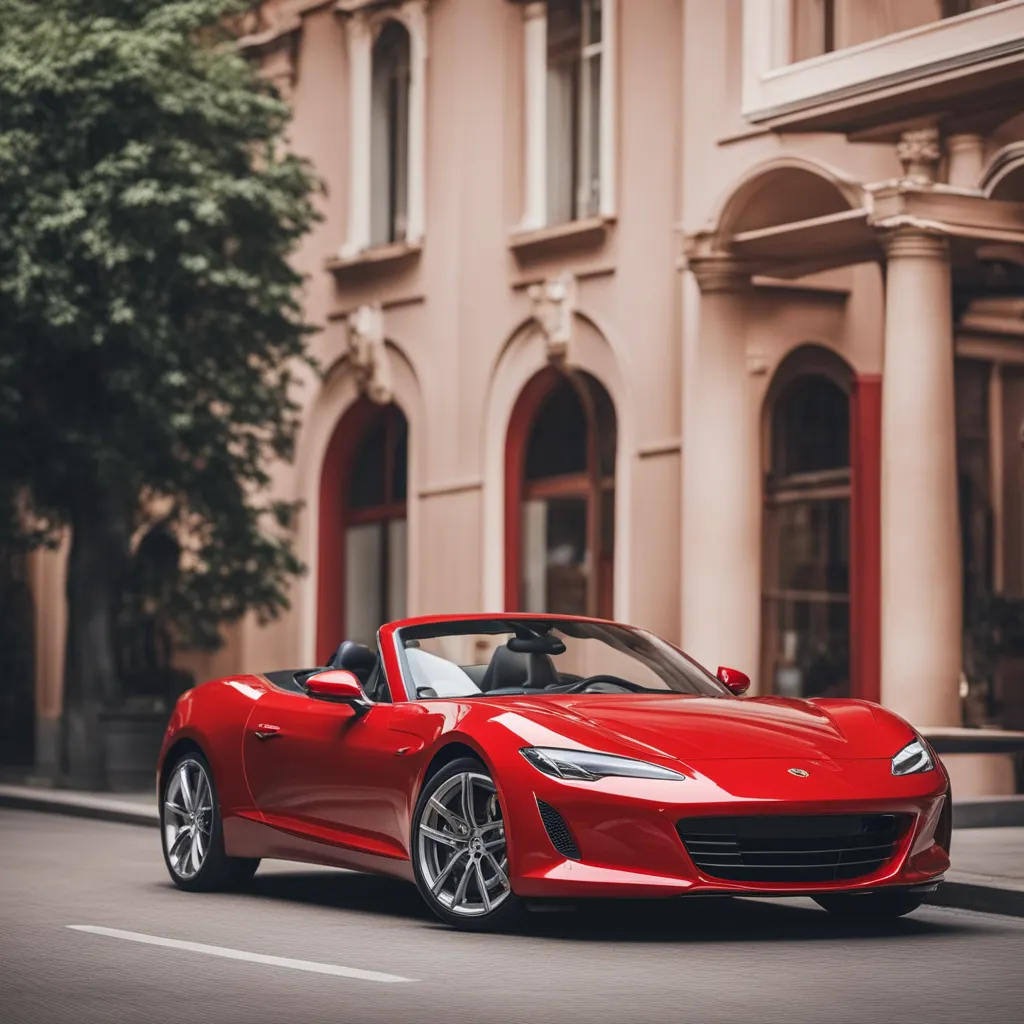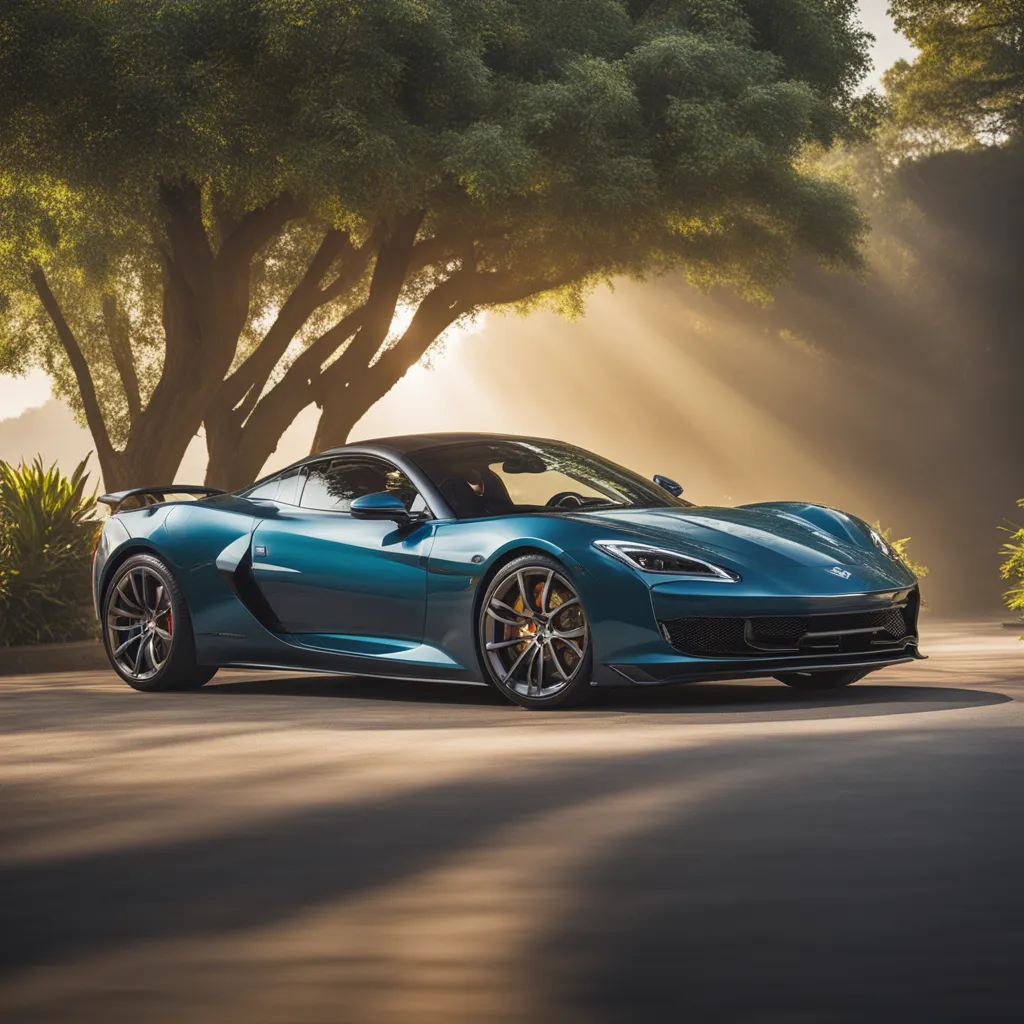Exploring the Science of Turbocharging and Its Transformative Impact on Sports Car Design
What do you think makes a car truly exhilarating?
Is it the sound of a roaring engine or the feeling of power as it surges forward?
For me, it’s the interplay between engineering prowess and automotive design, particularly in sports cars. Today, let’s unravel the intricate science of turbocharging and its profound influence on sports car design.

The Fundamentals of Turbocharging
Turbocharging might seem like a complex topic, but at its core, it revolves around a simple principle: maximizing the efficiency of an engine.
By forcing more air into the combustion chamber, a turbocharger allows a car to burn more fuel and generate more power without increasing the engine's size. Imagine trying to squeeze more juice from an orange than its size would typically allow; that’s precisely what turbocharging accomplishes for sports cars.
How Turbocharging Works
Essentially, a turbocharger consists of two main components: the turbine and the compressor.
The process begins when exhaust gases from the engine flow through the turbine, spinning it. This action converts exhaust energy into mechanical energy, which in turn drives the compressor. The compressor takes in ambient air and compresses it before sending it into the engine at a higher pressure.
The result?
Enhanced performance characterized by exhilarating acceleration and speed.

Component Function Turbine Spins with exhaust gases and creates mechanical energy Compressor Compresses the ambient air for improved combustion Practically speaking, this means I can experience more power from a smaller engine. I often find myself pondering how this level of ingenuity revolutionizes what we expect from sports cars today.
Turbocharging in Sports Car Design
How does turbocharging directly influence the design and performance of sports cars? Sports car enthusiasts, like myself, yearn for that perfect balance between power, weight, and design aesthetics.
Here’s where turbocharging shines. By allowing smaller engines to achieve higher power outputs, manufacturers can design lighter, more agile vehicles that can easily navigate both straightaways and curves.
The Dynamics of Performance
Engaging with the driving dynamics of a turbocharged sports car is a deeply immersive experience. Think about it: enhanced responsiveness, agility during cornering, and an acceleration that feels almost other-worldly. There’s something incredibly satisfying about the way a turbocharged engine responds to my foot on the accelerator. It’s an undeniable rush, one that elevates the entire driving experience.
One key aspect of turbocharging that excites me is the ability to maintain power over a broader RPM range. Traditionally, naturally aspirated engines would offer a very narrow power band, causing me to constantly shift gears at high speeds. However, turbocharged engines, with their greater flexibility, provide smooth, linear power delivery, allowing me to focus more on the road and less on shifting gears.
The Engineering Marvel Behind Turbocharging
At the heart of every engineering advance lies an intricate balance of technology and creativity. Thus, I find it fascinating to explore the advanced technologies in turbocharging that have emerged over recent years, transforming the way we think about performance.]
Variable Geometry Turbochargers
One of the most exciting developments is the variable geometry turbocharger. Unlike traditional fixed-geometry turbochargers, which are limited by the size of their vanes, variable geometry turbochargers feature adjustable vanes that can optimize airflow depending on the engine speed.
When I think about this innovation, I can almost visualize the complexities at play. At low RPMs, the vanes remain closed, enabling a quicker spool-up time, which results in less turbo lag and instant power delivery. When the engine revs high, the vanes open up, maximizing airflow and allowing for sustained performance.
Twin-Scroll Turbochargers
Parallel to my enthusiasm for variable geometry technology is my admiration for twin-scroll turbochargers. These designs effectively separate the engine's exhaust pulses to optimize the efficiency of the turbine. By employing two separate passages, the time between exhaust pulses reaches the turbine faster, significantly reducing lag.
For me, it's this innovative engineering that allows for smoother acceleration and better throttle response even at lower RPMs — an approach that merges power with civility.
Electric Turbochargers
Then, we have electric turbochargers, which squarely belong to the future of performance and efficiency. An electric motor assists a turbocharger’s spool-up, effectively eliminating turbo lag entirely.
When I conceptualize the sensation of a sports car launching forward without the incremental wait for the turbo to engage, I can hardly contain my excitement. The exhilarating power feels immediate, a concept that every sports car enthusiast can appreciate.
The Impact of Turbocharging on Driving Engagement
Engagement while driving is a crucial aspect that separates ordinary vehicles from extraordinary sports cars. I’ve noticed that, with the advancements in turbocharging technology, driving dynamics have shifted significantly.
Improved Accelerative Response
Ask anyone behind the wheel of a turbocharged sports car, and they’ll reveal how lively and responsive acceleration can be. The enhancement in power often leads to a much more fulfilling driving experience. With less lag and quicker responses, I find myself immersed in a symphony of revs and acceleration that is electric.
Cornering Abilities
The interplay of lighter engines and turbocharging also enhances cornering abilities. As the car remains balanced with a lower center of gravity thanks to reduced weight, I sense an eagerness to change direction. This agility is what transforms a mere drive into an adventure, allowing me to carve through corners with confidence and precision.
In many modern sports cars, the distribution of power torque throughout the range has allowed engineers to design vehicles with superior cornering capabilities. I often lose track of time while feeling the pure enjoyment of drifting around that last curve, knowing the turbocharger has facilitated such performance.

The Aesthetic Element of Sports Car Design
Beyond performance and engineering, the aesthetics of sports cars are also profoundly affected by turbocharging. Lighter engines give the design world new possibilities to play with. I witness how the reduced size and weight of turbocharged engines allow designers to create sleek, aerodynamic silhouettes that could have only been dreamt of in previous generations.
The Shift Towards Minimalism
The trend towards minimalism in automotive design dovetails beautifully with the rise of turbocharged engines. With a smaller engine footprint, designers can allocate space toward more impressive elements like advanced technology, luxury interiors, or enhanced aerodynamics. I often find myself appreciating how these changes have led to an overall evolution in aesthetic simplicity and beauty in sports car design.
Challenges and Criticisms of Turbocharging
As remarkable as turbocharging technology is, I recognize that it isn’t without its challenges and criticisms. One concern that I often reflect on is the potential for smaller displacement engines to compromise the driving experience due to a lack of character and sound.
Character and Sound
Many car enthusiasts relish the growl of a naturally aspirated engine. It carries a certain emotional weight and authenticity that turbocharged engines sometimes lack. While a well-tuned turbocharged engine can offer a thrilling crescendo, it often cannot replicate the raw, visceral sound of a high-revving V8. I find myself reminiscing about the musical harmony of older performance vehicles, parts of which seem to fade away as turbocharging becomes more prevalent.
Reliability and Maintenance
Another area of concern centers around the reliability and maintenance of turbocharged vehicles. Given the added complexity of turbochargers, potential issues may arise, leading to higher maintenance costs over time. I can't help but wonder how these advancements will stand the test of time and wear, considering their intricate engineering.

A Future Enhanced by Turbocharging
The tapestry of sports car design, interwoven with the science of turbocharging, paints an exhilarating picture of the future. As I sit in awe of the innovations – from variable geometry and twin-scroll to electric turbocharging – my passion for performance continues to deepen.
Turbocharging has notably revolutionized the automotive landscape, pushing boundaries I previously thought were unassailable. It has transformed not only the power of sports cars but also the very essence of driving engagement, aesthetics, and the experience of being behind the wheel.
Looking ahead, I find comfort in realizing that, while challenges exist, the future holds endless possibilities. As technology continues to advance, we may witness further refinements, melding exhilarating performance with captivating designs that promise to enhance not just our cars – but the experience of driving itself.
Isn’t it exhilarating to think about what lies ahead in this ongoing evolution of speed, performance, and design in the world of sports cars?



